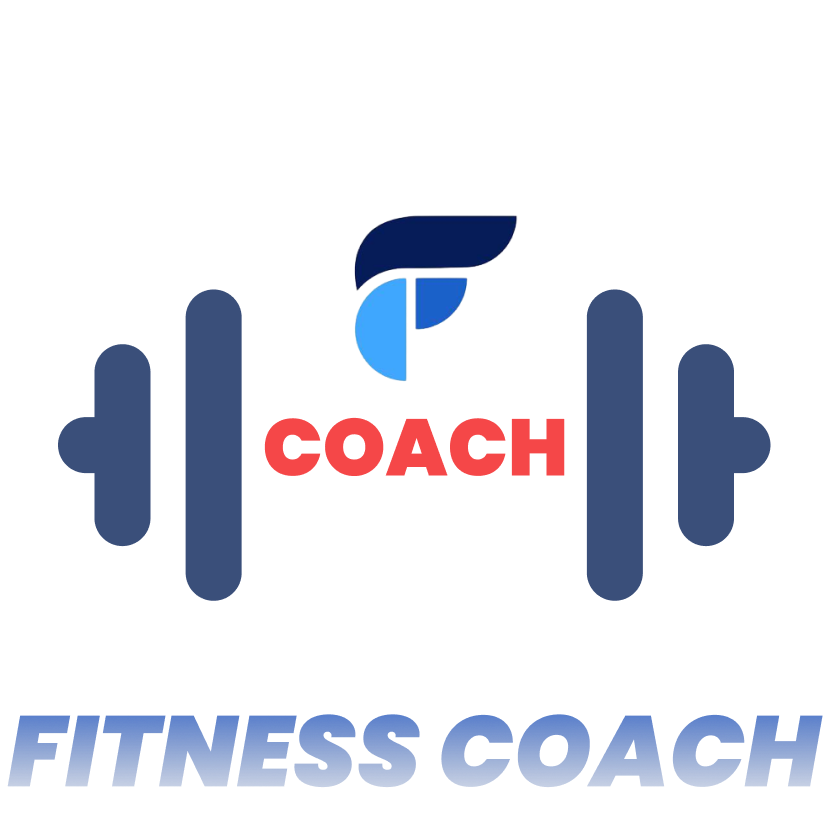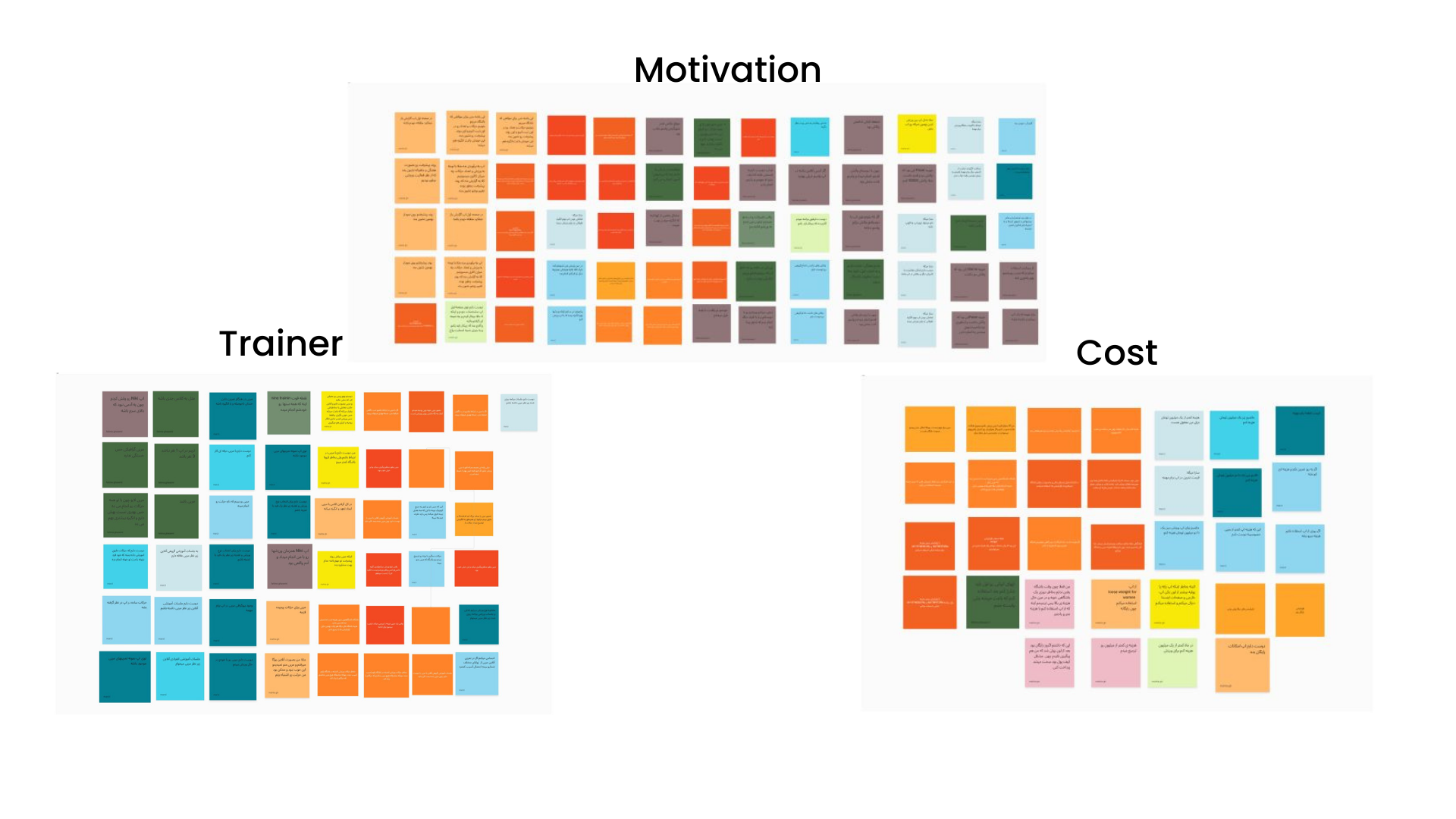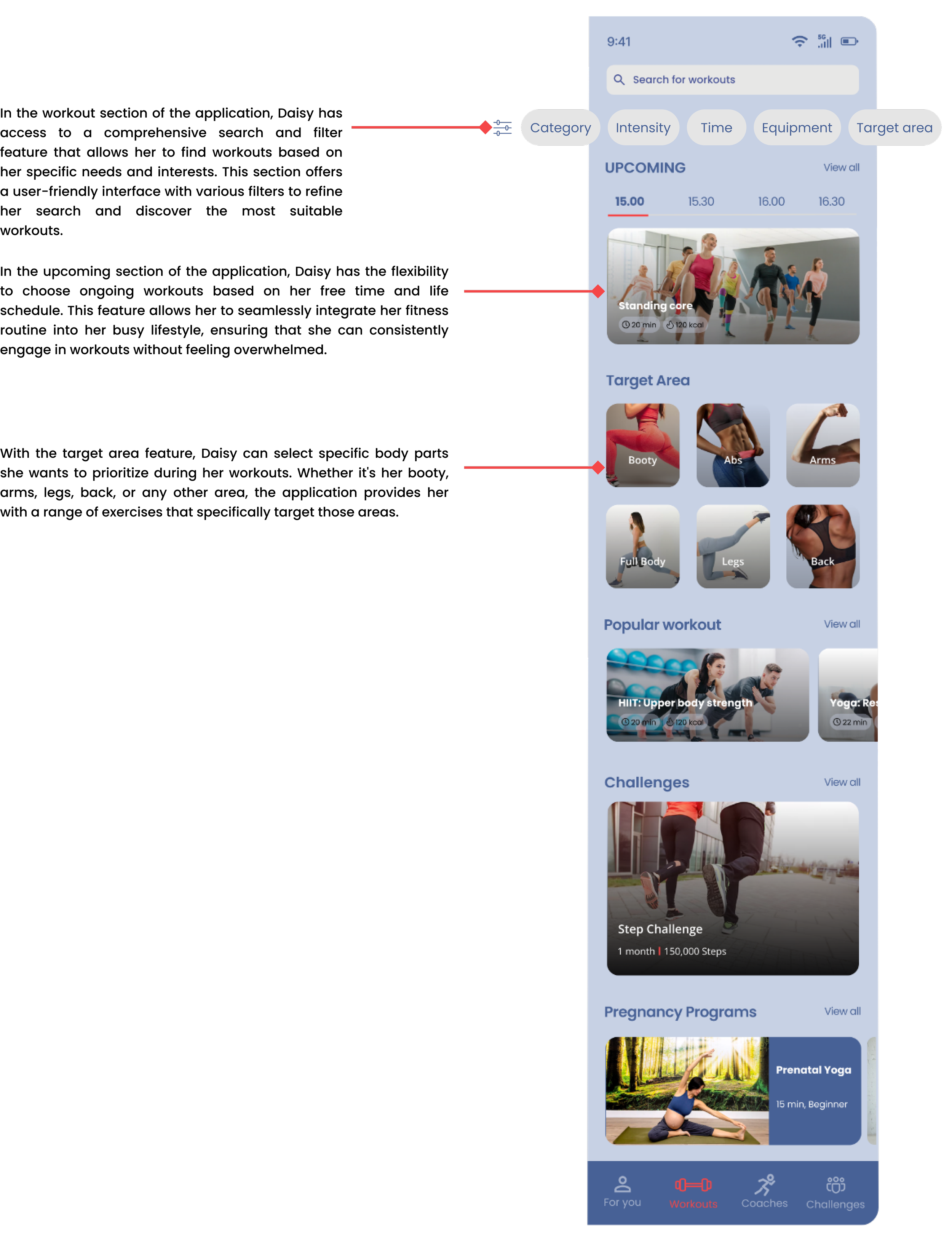Fitness Coache
Mobile app for women
Project Overview
Fitness Coach is a comprehensive fitness app for women that aims to empower working individuals to prioritize their physical well-being amidst the challenges posed by the COVID-19 pandemic. With its emphasis on convenience, personalized workouts, virtual personal trainers, and motivational features, the app provides an accessible and engaging platform for users to stay fit, motivated, and connected to their fitness goals. By integrating these features, Fitness Coach encourages users to lead healthy lives, regardless of their busy schedules and physical limitations.
Problem Statement
The COVID-19 pandemic has significantly disrupted the fitness routines of working women, making it challenging for them to prioritize their physical well-being. Extensive work pressure, limited time, and social commitments have resulted in decreased motivation and difficulty in maintaining a consistent workout regimen. Additionally, women may face unique physical limitations or challenges that require specialized guidance. As a result, there is a need for a comprehensive fitness app specifically designed for women, providing convenience, personalized workouts, virtual personal trainers, and motivational features to empower them to overcome these obstacles and lead healthy lives despite their busy schedules and physical limitations.
Goal
The primary goal of the fitness app is to help working women improve their overall health and well-being by enabling them to prioritize their physical fitness.
The app aims to address the issue of decreased motivation by providing effective tools, features, and resources that inspire and motivate users to stay committed to their fitness routines.
The app should offer to access personalized workouts and exercise plans.
The app should provide access to virtual personal trainers who can guide and support users in their fitness journey.
To maintain motivation and accountability, the app should include challenges, goals, and reminders that encourage users to push themselves and stay on track with their fitness goals.
Recognizing the financial considerations of working individuals, the app should provide flexible and reasonably priced membership options that offer value for money.
User Search
User Interview
Affinity Mapping
Competitive Analysis
Design Process
Scenario & Story board
Persona
Brainstorming
Information Architecture
User Flow
Wireframes
Visual Design
Implementing Feedback
Usability Testing
Survey
Discover Phase
In the survey conducted for our fitness platform, we received responses from 96 users, each sharing valuable insights. This visual representation allows us to gauge the participants' interest in various aspects. By examining the results, we can identify the most popular features or activities on our platform, enabling us to better tailor our services to meet the needs and desires of our user community.
User Interview
We conducted 16 user interviews during the discovery phase to get a better understanding of users’ needs and concerns.
Major Takeaways
After conducting survey and interviews, several key insights and pain points have emerged.
Lack of motivation: Users struggle to stay motivated and committed to their fitness routine due to various factors such as busy schedules, fatigue, and lack of accountability.
Limited access to group exercise: Individuals face limitations in participating in group exercise sessions, which impacts their ability to experience the benefits of social support, motivation, and variety in workouts.
Time management challenges: Users find it difficult to establish a fixed exercise schedule within their busy routines, leading to inconsistent workouts and difficulty in prioritizing physical activity.
Lack of personalized exercise guidance: Users require tailored workout plans that consider their individual needs, fitness levels, and goals. Without proper guidance, it becomes challenging to perform exercises correctly and progress effectively.
Need for a trainer: Users desire expert guidance to ensure proper form, technique, and safety during workouts. Lack of access to a qualified trainer hampers their ability to achieve optimal results and increases the risk of injury.
Membership pricing concerns: Users are conscious of the cost associated with fitness app memberships and expect affordable pricing options that provide value for money.
Persona
Define Phase
Offering Solution
Design thinking is an iterative and non-linear process that involves continuous development through experimentation, research, and iteration at each stage to discover the most optimal solution.
To ensure a positive digital experience, the mobile app should be designed to be user-friendly, highly usable, desirable, credible, and accessible. This can be achieved by offering tailored solutions that align with user behavior, attitudes, lifestyle, and insights derived from extensive research conducted for this project.
1.Personalized Workouts:
Tailor workouts to meet the unique needs and limitations of each user.
Take into consideration factors such as fitness level, goals, and any physical limitations.
Provide customized exercise plans that adapt and evolve as the user progresses.
2. Boosting User Motivation:
Introduce engaging challenges and competitions to keep users motivated and excited.
3. Customizable Workout Filters:
Implement filters within the app to allow users to easily find workouts that suit their preferences.
Enable users to filter workouts by duration, intensity, equipment, and targeted muscle groups.
Empower users to create personalized workout routines based on their specific requirements.
4. Video-Based Workouts:
Provide workout videos catering to different fitness levels, from beginner to advanced.
Include clear instructions and demonstrations to ensure users perform exercises correctly.
5. Trainer Matching:
Facilitate the process of finding an appropriate trainer based on user needs and goals.
Match users with trainers who have expertise in specific areas, such as post-pregnancy fitness or strength training.
6. Reasonable Pricing:
Offer session plans with reasonable pricing options to make the service accessible to a wide range of users.
Scenario & Story Board
User Flow
Ideate Phase
Information Architecture
With the information we gathered, we have designed the main navbar and sections under each tab.
Sketches
Design Phase
In order to explore how each step of information architecture and research would look and feel practically, we created low-fidelity wireframes by hand sketching.
Mid-fidelity wireframe
We created low-fidelity wireframes in Figma before planning page layouts. I created the final content after several rounds of iteration.
UI Kit
UI Design
The app begins with simple splash screens, followed by 3 walkthrough screens to get a brief overview of the app's main features.
Walkthrough screens
once a user opens our app, they get a glimpse into the app`s purpose and functions during the onboarding process
The app is structured based on 4 main screens tap, For you, Workout, Coaches, and challenges.
Set up your profile
Structure & Overview
The app lets the user customize workouts based on needs, goals, and concerns.
Screens
Reflections
What I have learned from this project
Importance of research:
Research is essential at all stages of the design process.
It helps improve the overall quality and effectiveness of a product.
Insights gained from research guide decision-making and product development.
Testing and iteration:
Regular testing and iteration are crucial for enhancing the product.
Iterative design allows for continuous improvement and refinement.
User feedback plays a vital role in shaping the product's user-friendliness and acceptance.
Development of a UI kit:
Creating a UI kit promotes consistency and coherence in design.
It facilitates effective communication and collaboration within the team.
A UI kit enables easier modification and adaptation of the product as needed.
What can we do next?
Doing usability tests and iterations on the product in order to make it more user-friendly.
improving the accessibility of the pages to make them usable for more users.






















